The Valieva case offers such an extensive editorial material that you can even imagine there is sufficient space for a Netflix series. The hypotheses to find out how the 15-year-old Russian champion may have taken the banned drug trimetazidine, which risked compromising her performance at the Beijng Olympic Games 2022, are at the center of an investigation by the Russian anti-doping agency, Rusada, and Wada, the World Anti-Doping Agency. The investigation is therefore taking shape as the circle is tightening around key figures in the skater’s entourage. This is because it seems to be excluded that the fifteen-year-old athlete may have voluntarily taken, with the aim of improving her performance, a dose of trimetazidine (2.1 ng / mL), a drug used to treat angina.
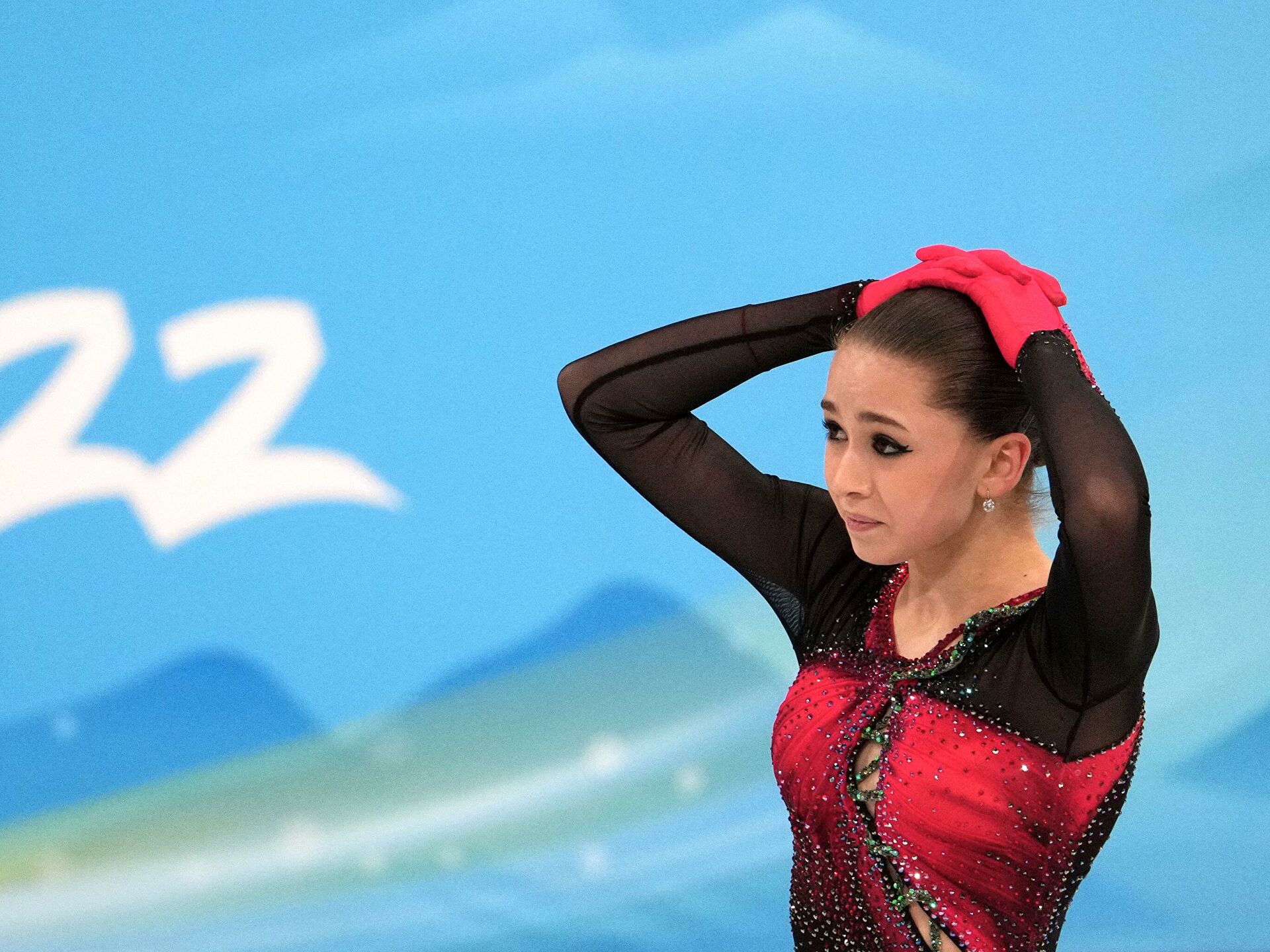 The test of December 25, which resulted positive for the drug, turned on the spotlight of the anti-doping investigators first of all on the coach Eteri Tutberidze who manages in all respects the skating club inside the famous Sambo-70 sports school in Moscow.
The test of December 25, which resulted positive for the drug, turned on the spotlight of the anti-doping investigators first of all on the coach Eteri Tutberidze who manages in all respects the skating club inside the famous Sambo-70 sports school in Moscow.
With the Valieva case, the debate has ignited within the Olympic committees and the internal federations, which in unison seem to share the idea of raising the minimum age to participate in the largest international competitions, such as the world championships and the Olympics. This incredible case of doping risks revolutionizing the world of sport again: at the moment there is talk of setting the entry threshold at 17 years.
But not only the Valieva case animated the international media during the last week of the Beijing games, to shake souls and arouse contrary reactions, it was also the attitude of the coach right at the end of the disastrous performance of Valieva at the event of free skating, where the athlete skated the worst program of his life, making the entire public, sector and enthusiasts understand that the pressure on her was so strong that it led her to an unmanageable emotional state.
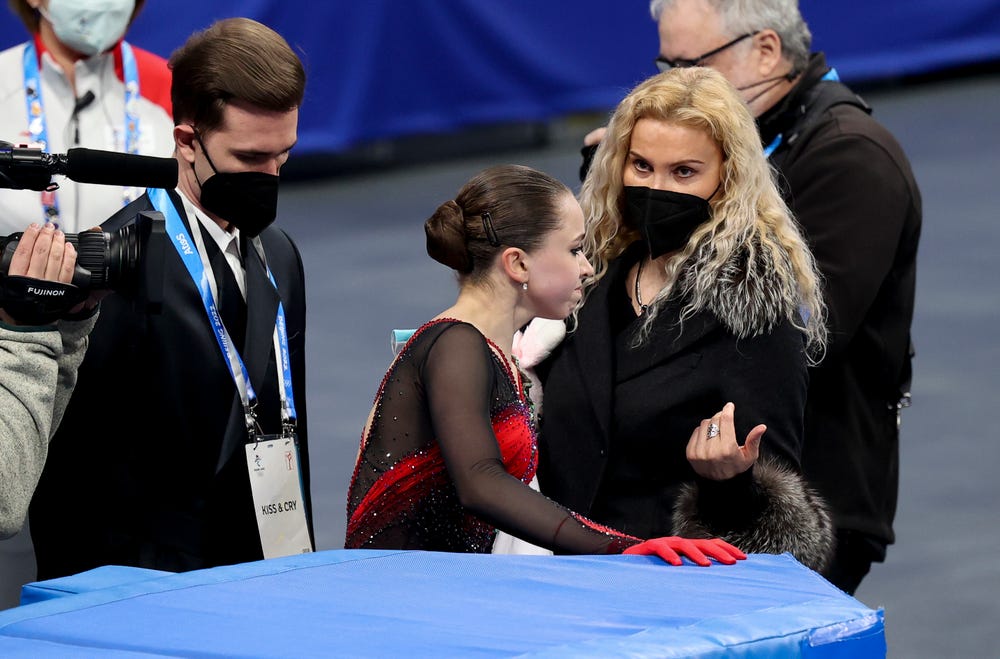 Kamila Valieva’s tears and despair at the Beijing Winter Olympics were a punch in the stomach for all sports fans. Even more disheartening was witnessing the reaction after the flop of this 15-year-old, overwhelmed by the controversy and the pressure for her turnaround on the disqualification for doping, of her coach or Eteri Tutberidze. The 1974 class proved to be hard just like the ice on which her athletes performed, and instead of consoling the emotionally destroyed Valieva, he attacked her by asking her the reasons for her mistakes and her not very combative spirit.
Kamila Valieva’s tears and despair at the Beijing Winter Olympics were a punch in the stomach for all sports fans. Even more disheartening was witnessing the reaction after the flop of this 15-year-old, overwhelmed by the controversy and the pressure for her turnaround on the disqualification for doping, of her coach or Eteri Tutberidze. The 1974 class proved to be hard just like the ice on which her athletes performed, and instead of consoling the emotionally destroyed Valieva, he attacked her by asking her the reasons for her mistakes and her not very combative spirit.
Eteri Tutberidze’s comments as Valieva stepped off the ice: “Why did you let it go? Explain to me, why. Why did you stop fighting? You let it go after that Axel [the jump on which she made her first mistake]. Why?”
“It was chilling to see the tremendous coldness with which she was received by her entourage rather than trying to help her,” Bach said, commenting on how Tutberidze, along with choreographer Daniil Gleikhengauz (a third member is the coach Sergei Dudakov), welcomed a tearful Valieva after the disastrous free program. The number one in world sport promises that “if there are illegal acts we will not hesitate to take the appropriate measures which will be very strong”.
Indeed, no caress, no hug, but only coldness at the ‘kiss and cry’ with Valieva strongly moved.
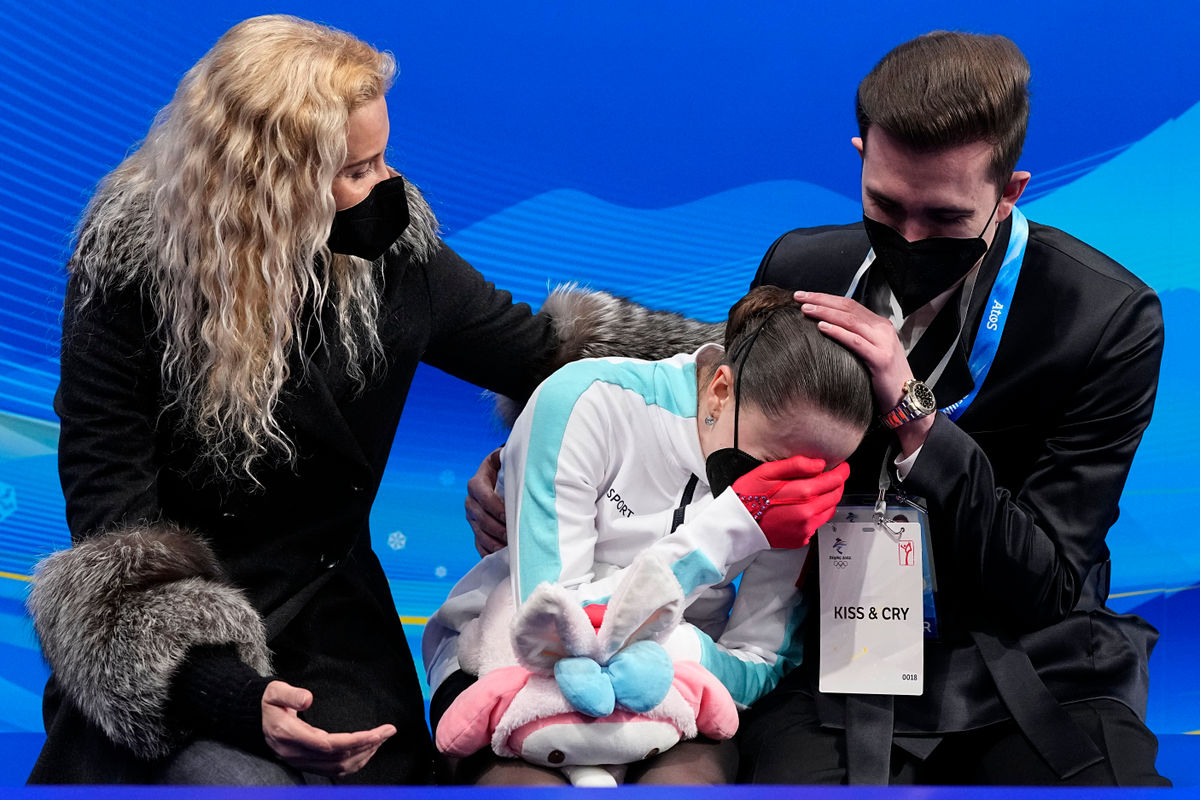 Defined as the “Lady of skating”, Eteri Tutberidze, a very controversial figure in Russian skating and sport, was born in Moscow in 1974 to a Georgian father and mother of Russian and Armenian descent. Fifth of five children, Eteri, a great lover of figure skating, had to abandon her career due to a back injury. She moved to the United States as part of a Russian contingent that did ice shows, she lived in an ecumenical organization in Oklahoma City. Here her life was in danger of being marked forever by an attack in 1995 when the anti-government terrorist Timothy McVeigh detonated bombs on the federal building, killing 168 people. Eteri managed to escape the attack and received 1200 dollars from the state as compensation. After buying a car and moving, the beginning of her career as a coach, with her daughter Diana Davis, a member of the Russian dance team, among her future students.
Defined as the “Lady of skating”, Eteri Tutberidze, a very controversial figure in Russian skating and sport, was born in Moscow in 1974 to a Georgian father and mother of Russian and Armenian descent. Fifth of five children, Eteri, a great lover of figure skating, had to abandon her career due to a back injury. She moved to the United States as part of a Russian contingent that did ice shows, she lived in an ecumenical organization in Oklahoma City. Here her life was in danger of being marked forever by an attack in 1995 when the anti-government terrorist Timothy McVeigh detonated bombs on the federal building, killing 168 people. Eteri managed to escape the attack and received 1200 dollars from the state as compensation. After buying a car and moving, the beginning of her career as a coach, with her daughter Diana Davis, a member of the Russian dance team, among her future students.
As a coach her career started in San Antonio: her athletes ranged from athletes to casual amateurs to bored old men. At that time she didn’t know she was destined to be the greatest revolutionary in her field, preparing champions for the highest three steps of the podium in the main competitions.
Once come back in Russia, where the right knowledge and interpersonal skills decide a lot, she had lost these connections during her absence; she couldn’t find a suitable job, and the only thing she could do was train rehabilitation groups on inflatable street skating rinks. It took her almost ten years to adapt to the new Russia: she had left for America when the Soviet Union had just collapsed, and she was now returning to the harsh reality of the new Russian state in her formative years. It was only eight years after her return to her mother country, when she coached 15-year-old Yulia Lipnitskaya to team gold with Russia at Sochi 2014, that she started to become a household name.
The methods of the coach to make these girls champions are very hard and have raised a lot of controversy. Her trainer is famous for the brutal and authoritative methods with which she subdues her skaters. The athletes, according to when circulating in the environment, train every day of the week, except for one dedicated to rest, for an average of 6-8 hours a day. Athletes are also induced to avoid any kind of contact with people unrelated to their group.
Female figure skating, marked by Tutberidze’s work, is dominated by prepubertal Russian girls. The Eteri girls talk openly about not being able to drink water during competitions. They do their best to delay puberty by eating only “powdered nutrients” or by taking Lupron, a puberty blocker known to induce menopause. They are subjected to daily public weigh-ins and verbal and physical abuse. And they compete while injured, huffing “smelling salts” while wearing knee braces and collapsing in pain after programs.
In an interview, the two-time world champion and Olympic silver medallist, Evgenia Medvedeva, recalled that she “lived half-starving” while training at the much-admired Sambo-70 Russian training camp in the lead up to the 2018 Pyeongchang Winter Olympics. The same Eteri Tutberidze disclosed in an interview that 15-year-old, 2014 Olympic champion Yulia Lipnitskaya, during the training season often relied entirely on a diet of “powdered nutrients.” Two years after the Olympics, Yulia retired and began treatment for anorexia. The reigning Olympic and world champion from Russia, Alina Zagitova, clearly explained that weight loss is associated with the ability to jump a quad. In an interview in which she discussed her plans to incorporate the quad in her routine, at age 17 she said, “I will need to prepare for them physically and mentally. I will also need to lose some weight, something like 3kg, to decrease the risk of injuries.” With smaller and lighter bodies, the chances of competing at higher levels in elite gymnastics are higher. Every day they are subjected to the test of the scales and suffer verbal and physical abuse, as well as using particular salts to not feel the pain and continue to train.
They are forced to train even when they are not in top form without ever being able to complain. Moreover, team spirit does not exist, since Eteri pushes each of its skaters to go beyond healthy competition with their compatriots, putting them against each other. It is said that Eteri’s method is influenced by her collaboration with controversial sports doctor Filipp Shvetsky, who was barred from the Russian rowing team in 2007 after a doping investigation. The towering, dark-haired physician works at a war veterans’ hospital in Moscow in addition to treating members of Russia’s figure skating team. Shvetsky and several Russian rowers were suspended from the sport between 2007 and 2010 for anti-doping violations.
Ėteri Tutberidze is now unanimously recognized as the most suitable figure for creating skating phenomena and her methods are not secret. The “Eteri girls”, as they are called when they join the group, are subjected to an extremely hard regulation, which they cannot in any case transgress. The athletes with her do not last long. They explode as soon as they become teenagers and retire when they are only 16 or 17. It’s the “Eteri expiration date”, as fans call it. The ferocious methods of Eteri Tutberidze: baby skaters brought to the limit beyond all limits.
Especially in recent days, everything has been said about Eteri Tutberidze, despite knowing very little officially about the functioning of the skating school (the so-called Khrustalny ice rink), inside the Sambo 70 sports training center. Based in Moscow, the institution was founded in 1970 by David Lvovich Rudman (sambo champion), initially as a small section of a comprehensive school, and over the time, it has gone on to become the largest educational centre for multiple sports, including figure skating. Sambo-70 has trained more than 40,000 athletes, including Olympic medallists in gymnastics, figure skating and judo. The Khrustalny division is entrusted to Eteri Tutberidze, assisted by Sergei Dudakov and the choreographer Daniil Gleikhengauz.
Despite her strong methods, Ėteri Tutberidze, in skating, is one that she counts. In 2020 she won the International Skating Union’s “Best Coach” award and Ted Barton, the executive director of Skate Canada, called Tutberidze’s girls a “stable of thoroughbred” horses. Johnny Weir, NBC’s prime-time figure skating commentator, posted an Instagram photo of himself smiling during his visit to Sambo-70, calling it “the most iconic school in the world” and saying he was “very thankful I got to enjoy such beautiful skating.” In short, there is no shortage of appreciations. 2018: Figure skating coach Eteri Tutberidze receives Russia’s Order of Honour from the President of Russia, Vladimir Putin, at a ceremony in the Moscow Kremlin.
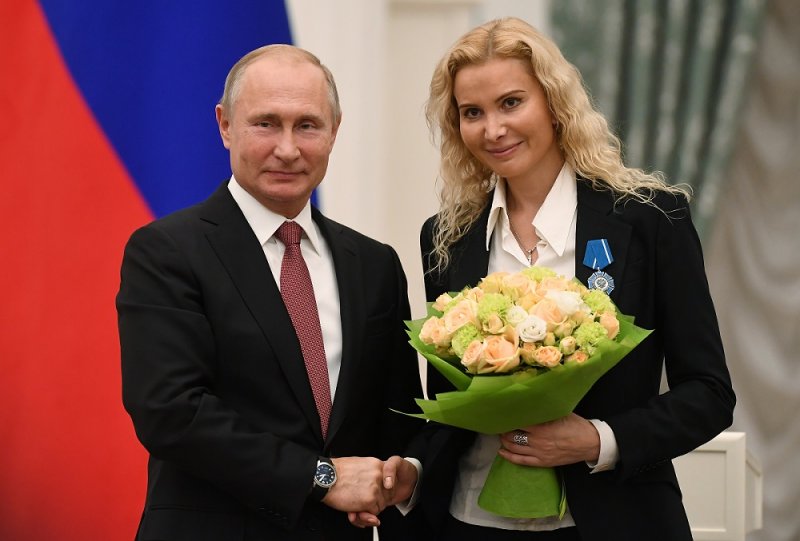 The legal, sports, and education systems in Russia aren’t the same as American systems. The country has had a virtual pipeline of world and Olympic champions in women’s figure skating in recent years. Figure skating in Russia has always been a popular sport, unlike the hot and cold relationship the sport has had in the U.S.. In Russia, children which show any potential for advanced skill for a prestigious event such as figure skating – in Russia, figure skaters are royalty – they are basically plucked from regular life and put into a training program dedicated to that skill. You’re a good skater? Now your life is skating. In mother Russia, the ice skates you. Do the top skaters go to school? Some of them homeshool or online school, others have special schooling programs, that allow them to practice and at the same time to study.
The legal, sports, and education systems in Russia aren’t the same as American systems. The country has had a virtual pipeline of world and Olympic champions in women’s figure skating in recent years. Figure skating in Russia has always been a popular sport, unlike the hot and cold relationship the sport has had in the U.S.. In Russia, children which show any potential for advanced skill for a prestigious event such as figure skating – in Russia, figure skaters are royalty – they are basically plucked from regular life and put into a training program dedicated to that skill. You’re a good skater? Now your life is skating. In mother Russia, the ice skates you. Do the top skaters go to school? Some of them homeshool or online school, others have special schooling programs, that allow them to practice and at the same time to study.
The first athlete to overturn the rules of skating was, eight years ago, at the 2014 Olympics, to leave everyone speechless was Julija Lipnickaja. She was then fifteen and an impressive talent, which she kept with her eyes glued to the screen millions of spectators and allowed her Soviet team to win the gold in five circles. It was then the turn, four years later, of the rivalry between Alina Zagitova and Evgenija Medvedeva and finally, at these Games, of Kamila Valieva. All followed by a single coach, who under her guidance have reached the top of the world.
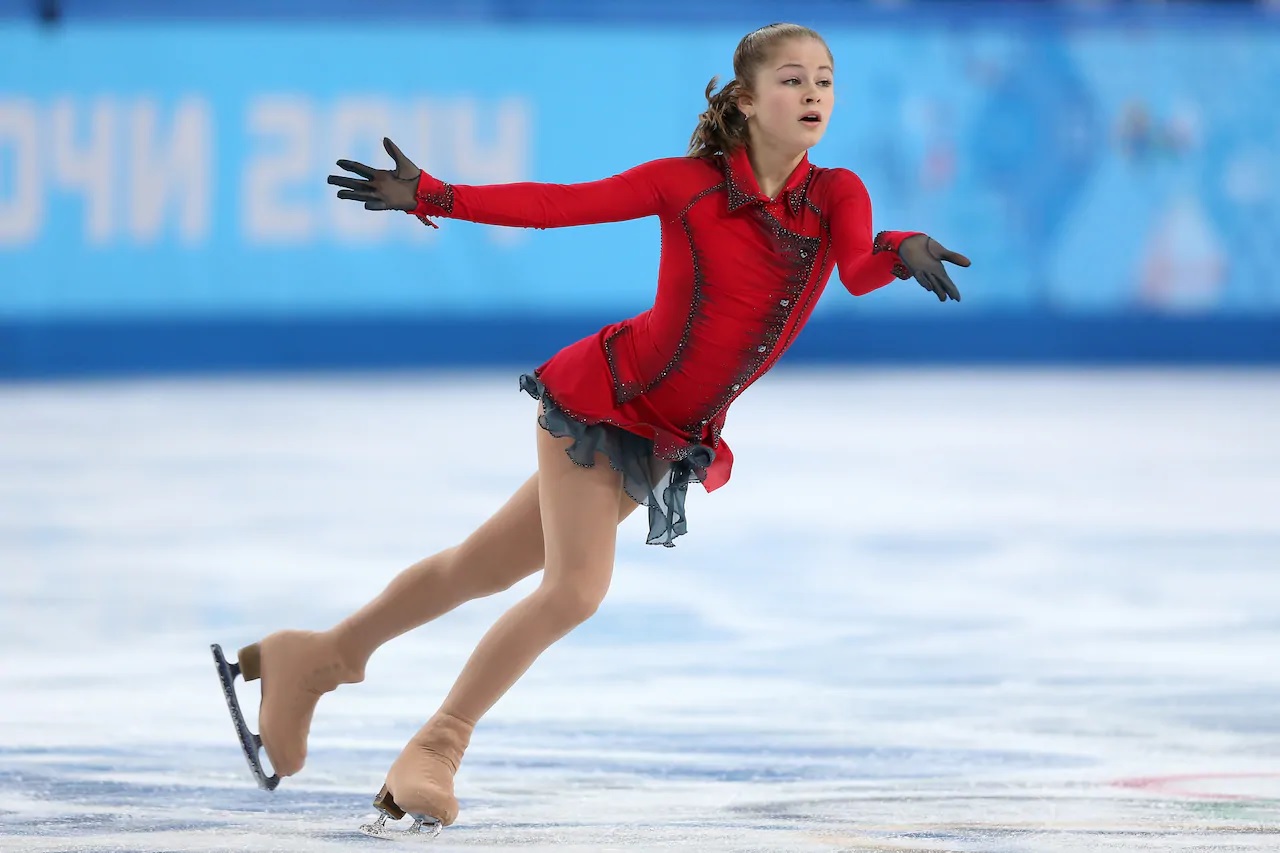 But the sheer number of talented young teens flocking to the school, and the extreme success they achieved, raised inevitable questions about Tutberidze’s methods, and the environment at the rink where it seemed that every skater was expendable, and only as valued as the medals they won. Conflicts had been brewing about the school as students have come and gone; Evgenia Medvedeva, the reigning Olympic silver medalist, left Tutberidze after the Games in 2018 to train in Canada, before returning again and then retiring from competitive skating. Trusova, the first woman to land a quadruple Lutz in competition, was training with Tutberidze for the Beijing Olympics but left the school to train with Olympic champion Evgeni Plushenko in 2020 before returning again to work with Tutberidze this season.
But the sheer number of talented young teens flocking to the school, and the extreme success they achieved, raised inevitable questions about Tutberidze’s methods, and the environment at the rink where it seemed that every skater was expendable, and only as valued as the medals they won. Conflicts had been brewing about the school as students have come and gone; Evgenia Medvedeva, the reigning Olympic silver medalist, left Tutberidze after the Games in 2018 to train in Canada, before returning again and then retiring from competitive skating. Trusova, the first woman to land a quadruple Lutz in competition, was training with Tutberidze for the Beijing Olympics but left the school to train with Olympic champion Evgeni Plushenko in 2020 before returning again to work with Tutberidze this season.
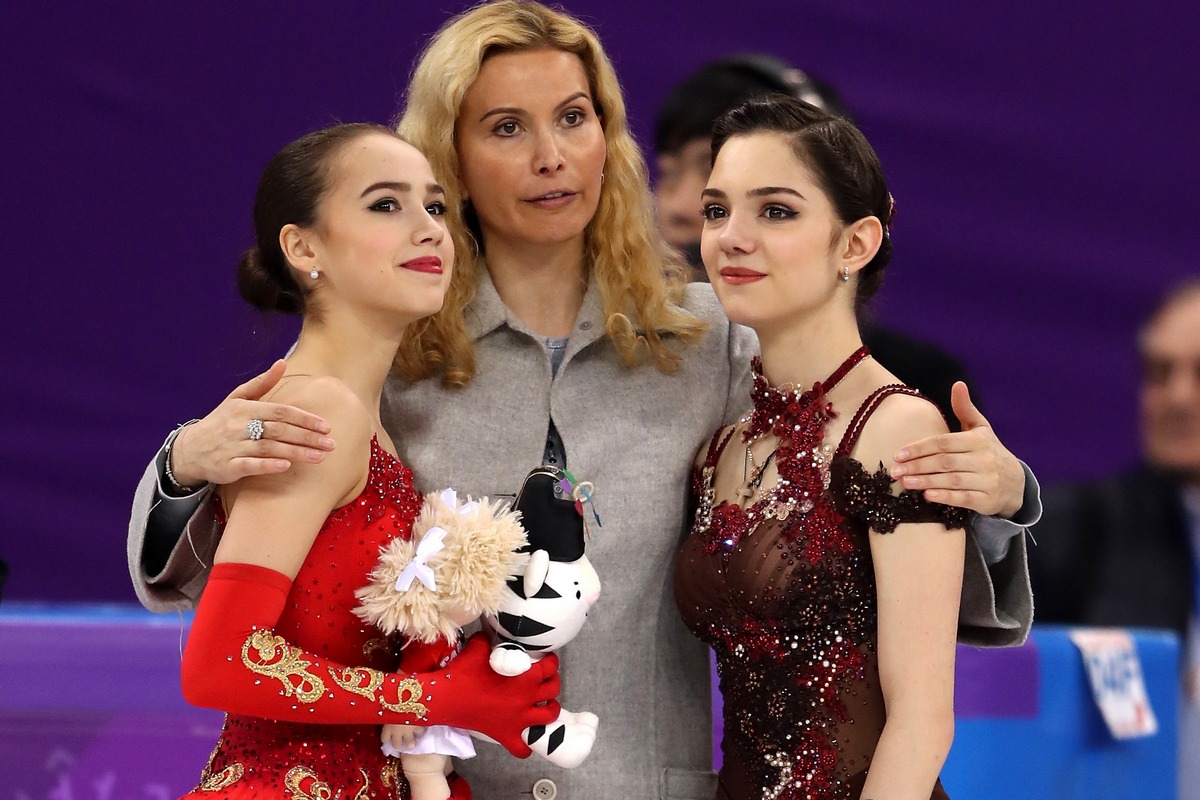
The Tutberidze method – Hers is an approach inspired by historical coaches Bela and Marta Karolyi. Starting from Romania, the couple in work and life achieved fame in the 70s and produced nine Olympic champions, fifteen world champions and sixteen European medals in artistic gymnastics. The Karolyi found that prepubescent girls, with small and light bodies, could more easily complete the difficult sequences required by international competition schedules. So they began to train them, accustoming them to brutal practices. At the time, the Karolyi were treated as heroes, capable of turning children into champions. So it happens today with Eteri Tutberidze.

Before the Valieva case, it was the case of Adian Pitkeev that led to discussion on Eteri’s modus operandi. At the 2016 Russian national championships, Adian was forced to stuff himself with morphine to compete despite an injury. This did not stop him from falling, severely breaking his spine. Initially the boy did not realize what had happened as he was under the influence of substances and in order not to disappoint the coach whose wrath he feared he continued to compete, compromising the situation. The fracture was so severe that it ended his career. Tutberidze in front of the cameras with a coldness similar to that seen with Valieva, told the boy to “fix his face”, wiping the tears from her face and then blamed him for her flop.
“Destroy to rebuild” is the motto used in these cases. There is nothing capable of provoking a winning reaction like the humiliation suffered by a figure, that of the coach, who represents absolute authority for athletes. Some, faced with this regime, collapse. Those who resist, however, enter the track and win gold medals.
One technique that makes Tutberidze’s skaters so consistent is her insistence on consistency with jumps. If a skater pops a jump—meaning she opens up and doesn’t do all the rotations in the air before landing—while performing a run-through of her program, the music stops and she has to redo the program from the beginning until she executes it cleanly. That can be exhausting, especially if the popped jump comes toward the end of the program, which means the skater is essentially doing multiple run-throughs in a session.
The hard method is certainly not new in sport. China has shamelessly shown the images of the workouts to which the boys who exercise in its gyms are subjected. Across the country there are thousands of schools that recruit talented children from an early age to make them number one in the world and China’s excellent results in the medal table of every Olympics only push parents to subject their children to these tests.
In addition, all the best Russian and some foreign coaches have already joined the competition. They understood a long time ago that the only way to fight Tutberidze’s monopoly is to fight with the same weapons as her. Thus, at the last Russian championship 10 out of 18 competitors were able to create “Ultra C” elements. And even if Eteri disappears tomorrow for some reason, the progress she has introduced will be unstoppable. The revolution has begun and the world of figure skating is already no longer the same.







